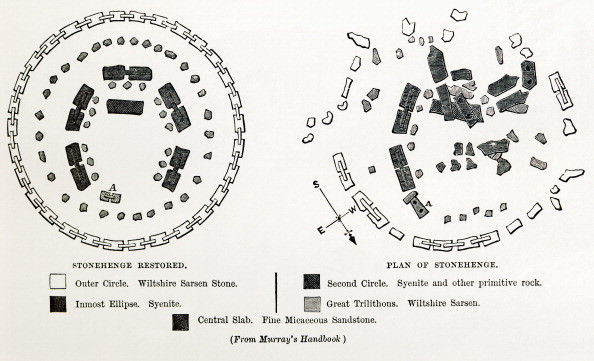Archaeologists Reveal that Stonehenge was a Complete Circle

Archaeologists confirmed that Stonehenge, one of the wonders of the world, was once a complete circle.
The evidence was revealed after dry weather exposed the outlines of missing stones on the Stonehenge site in Wiltshire, England.
A lot of people assume we've excavated the entire site and everything we're ever going to know about the monument is known. But actually there's quite a lot we still don't know. It's great that people who know the site really well and look at it every day were able to spot these parch marks.
Every summer, the ground is kept moist and the grass is watered. However, this year, the hosepipe used to water the area was too short to cover the entire site. This left a section of the inner stone circle to dry out and reveal interesting parch marks, reported The Telegraph.
The area that had not been watered revealed two missing parch marks where it is assumed missing sarsen stones may have once stood.
Susan Greaney from English Heritage said the discovery is "very significant" and demonstrates that there is still much to discover about Stonehenge.
Stonehenge: circle of parchmarks identified outside sarsens between Y and Z holes @AntiquityJ http://t.co/6W70E0oibR pic.twitter.com/14iZitAAnw
— Win Scutt's ArchNews (@Archaeology_ws) August 27, 2014
Stonehenge WAS completely round: 5,000 year mystery solved by groundsman who couldn't water part ... http://t.co/YwaQBLFMmD via @MailOnline — Tim Daw (@TimothyDaw) September 1, 2014
"A lot of people assume we've excavated the entire site and everything we're ever going to know about the monument is known. But actually there's quite a lot we still don't know. It's great that people who know the site really well and look at it every day were able to spot these parch marks.
"We maintain the grass with watering when it's very dry in the summer, but our hosepipe doesn't reach to the other side of the stone circle. If we'd had a longer hosepipe we might not have been able to see them," said Greaney.

Historians have debated whether or not Stonehenge was once a complete circle or intentionally left as an incomplete circle.
Since the hosepipe failed to reach the southwest quadrant of the circle and it's been a dry summer this year, Tim Daw, an English Heritage steward, was quick to notice the 'stone holes' and call on archaeologists for further investigations.
"I was standing on the public path looking at the grass near the stones and thinking that we needed to find a longer hosepipe to get the parched patches to green up. A sudden light-bulb moment in my head, and I remembered that the marks were where archaeologists had looked without success for signs that there had been stone holes, and that parch marks can signify them," said Daw before adding:
"Not being archaeologists we called in the professionals to evaluate them. I am still amazed and very pleased that simply really looking at something, that tens of thousands of people had unwittingly seen, can reveal secrets that sophisticated machinery can't."
Stonehenge stands as one of the most puzzling and famous prehistoric monuments in the world. It is rumoured to have been built in several stages with, "the unique lintelled stone circle being erected in the late Neolithic period around 2500 BC," according to the Stonehenge Heritage site.
© Copyright IBTimes 2025. All rights reserved.






















